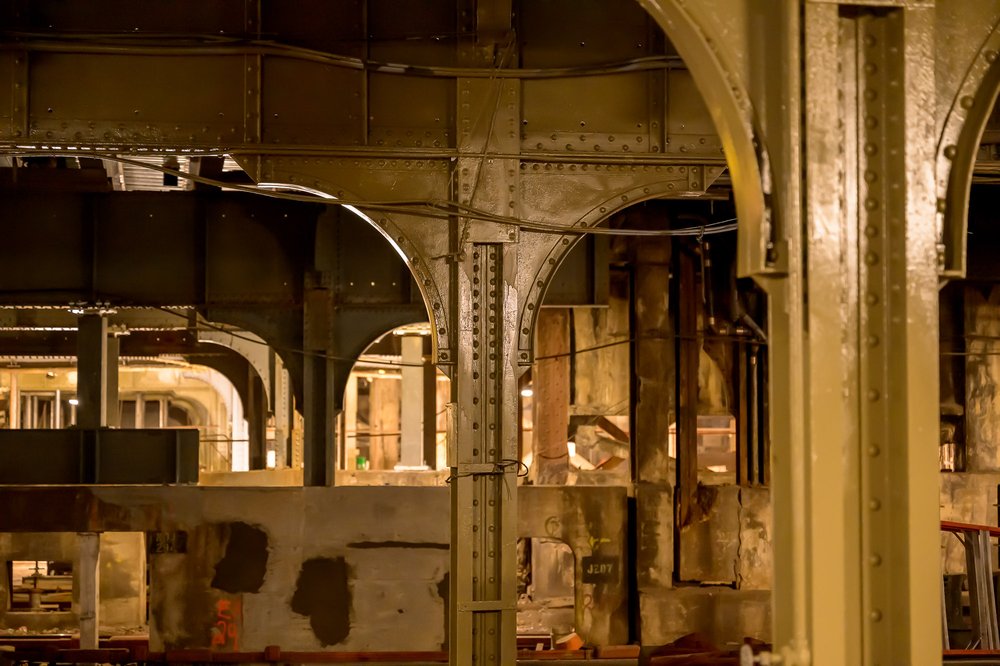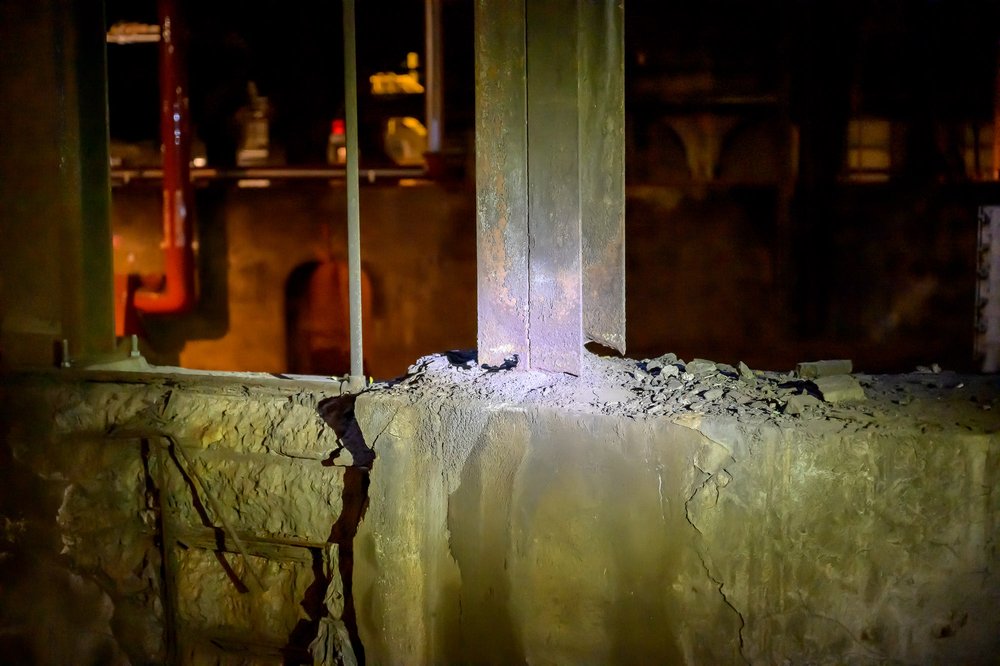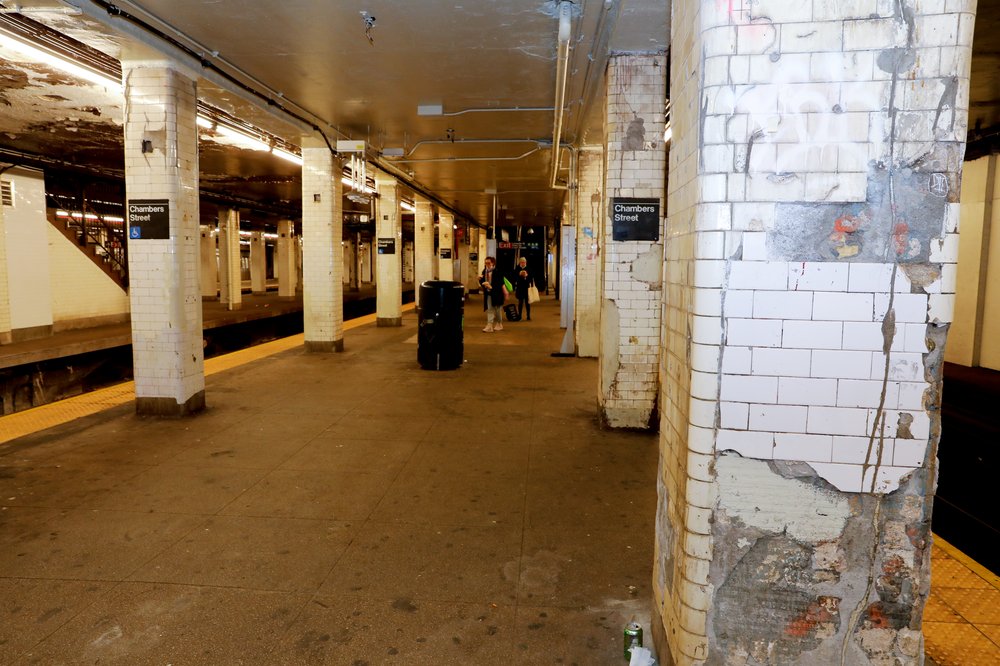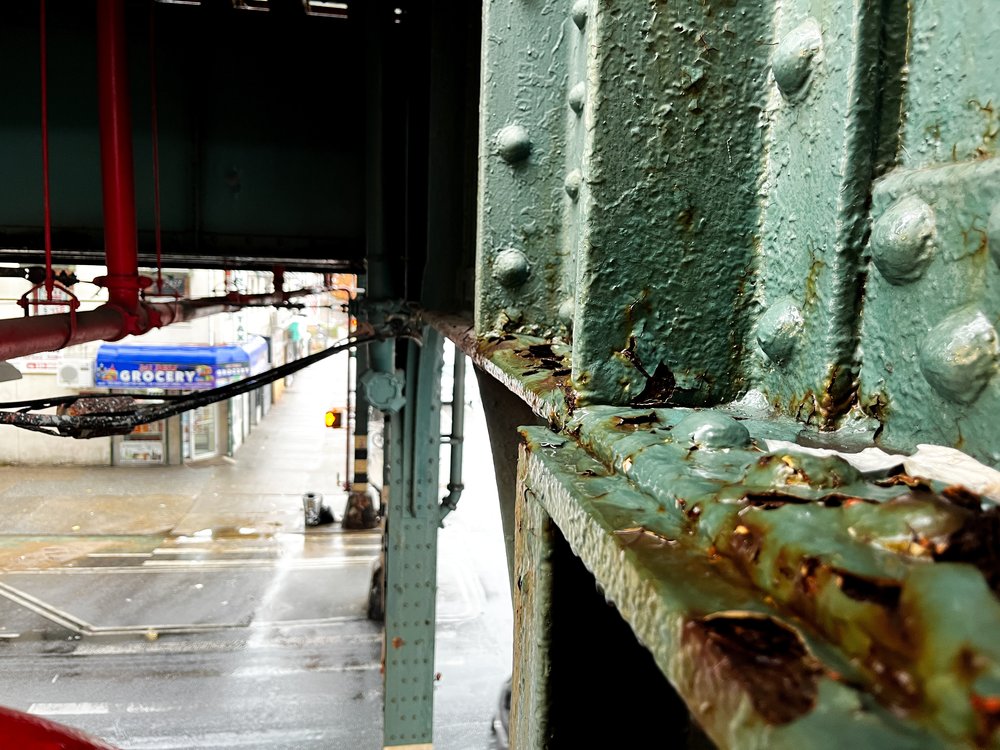‘Like cancer’: MTA’s trains depend on rusty, corroding columns from the early 1900s
Jan. 23, 2025, 6:31 a.m.
New Yorkers can clearly see their city's mass transit system is rotting before their eyes.

Just north of Grand Central Terminal’s gleaming main concourse in Midtown, thousands of steel beams supporting the station’s train tunnels are deteriorating.
Metro-North riders looking out their train windows as they depart can catch a glimpse of Grand Central’s sprawling network of 40 tracks. Its cavernous underbelly is filled with hundreds of rusty columns and crumbling concrete slabs that hold up Park Avenue above. Those beams date back to the early 1900s — and MTA officials warn they’ve reached the end of their life.
“The condition of this artery continues to deteriorate in very significant ways,” said MTA construction chief Jamie Torres-Springer as he stood beside the terminal’s iconic clock and information booth. “The worst thing that can happen if you don’t deal with that is you have the potential for a collapse.”
The subterranean space is known as the Grand Central train shed, which is 110 years old and acts as the entry point for roughly 200,000 daily riders in and out of Manhattan. The structure narrows as it extends to 97th Street, before the tracks rise above ground. MTA engineers estimate 95% of its support beams are in “poor or marginal condition,” which is why Torres-Springer worries it could fall down.

The MTA wants to spend $1.7 billion to renovate the train shed as part of its proposed $65 billion five-year construction plan, which is currently at the center of tense negotiations among state lawmakers.
Much of the plan focuses on replacing old, behind-the-scenes equipment that powers the city’s subways — but it also includes billions more to fix infrastructure that’s crumbling before riders’ eyes. Those projects would include renovations to more than 150 subway stations, reinforcing the city’s elevated tracks and rebuilding the Grand Central train shed.
Torres-Springer said there’s no immediate threat the train shed will collapse, but warned its condition will only worsen the longer the MTA waits to begin reconstruction. He said delaying the work would only cost taxpayers more down the road.
“It gets harder and harder to get that done as the years go by,” Torres-Springer said.

Bob Laga, the MTA’s vice president of infrastructure, said water constantly leaks into the train shed, which corrodes its steel support columns.
“Rust on the steel beam is like cancer,” Laga said.
When the artery was built in 1913, it was designed to hold horse-drawn furniture trucks, not modern trucks that weigh more than 30 tons.
For now, Laga said crews periodically inspect the train shed’s concrete by tapping the slabs with a spike and listening for a specific dull noise that tells them if the structure is crumbling.
- heading
- NYC's fragile subways
- image
- image
- None
- caption
- body
This is the latest in a series on the state of New York City’s subway system. Gothamist reporters found delays and infrastructure problems are on pace to make service worse than the MTA’s “summer of hell” in 2017, when the subway’s reliability dropped to its lowest level in decades.
The MTA is asking lawmakers in Albany to fund its $65 billion construction plan, which aims to help modernize the city’s subway trains and the depots where they’re repaired.
Our reporting includes:
-A detailed look at rising subway delays — and the MTA’s struggle to fix the equipment causing the problems. Read more here.
-An investigation into the strained electrical systems that power the subway, which rely on 1960s technology and frequently explode. Read more here.
-A dispatch from a subway signal room in Downtown Brooklyn, where trains are directed on and off the Manhattan Bridge by technology that was invented when Franklin Delano Roosevelt was in the White House. Read more here.
-A look inside the MTA’s century-old repair shops where workers struggle to get old trains back into service. Read more here.

The Chambers Street station on the J line has become of disrepair in the city's transit system.
The MTA’s 61 miles of elevated subway tracks are also held up by fragile, century-old steel beams. Roughly half of those structures are covered in rust and need to be refurbished and reinforced with waterproof paint. Nearly five miles of tracks either need to be reinforced or require urgent repairs, according to MTA engineers.
“I always have a fear that the whole platform will collapse one day,” said rider Shawn Ebanks in said of the 233rd Street station on the 2 line in the Bronx. “Let me [not] speak it into existence though, but I always have a fear of it.”
The elevated tracks present another hazard: falling debris. After a wooden beam fell off a 7 train platform in Queens and nearly impaled an Uber driver five years ago, the MTA installed nets and baskets below most of its above-ground tracks.
But officials say those nets and baskets are a temporary solution to a larger problem. The agency wants to spend $5.6 billion through its next construction plan to make long-term repairs to its elevated tracks.

The MTA also hopes to spend another $7.8 billion to fix stations across its subway and commuter railroad networks. That money would fund new elevators at more than 60 stations, along with upgrades to stairways, platforms and tiles. MTA officials point out that for most of the agency’s history, crucial work to replace subway tracks and cars was prioritized over station repairs.
Still, riders across the city don’t trust the agency will use that money to make subway stations into pleasant places to wait for a train. And they certainly have no hope the system will one day be as clean as Tokyo’s or as gleaming as Moscow’s, where some stations are fitted with chandeliers.
“I hear all of these stories of grandeur, but it never occurs,” said D train rider Wanda Goodin, 54, as she stood at the 161st Street-Yankee Stadium station in the Bronx. “I don't know what happens with the money. Maybe they just pay themselves, but I don't see anything changing.”
Another D train rider, Malcolm Green, said he doesn’t think the MTA should prioritize cleaner stations. Green commutes with his son to school every day from the Bronx to Manhattan and said they’re often late due unexplained delays.
“We would rather have good, strong service rather than pretty stations, anytime,” Green said. “Pretty stations don’t matter. It’s whether we get to work, whether the trains actually work.”
A state of collapse: How the MTA put riders on the fast track to ruin 'A lot more breakdowns': NYC's oldest subway cars are fixed in crumbling repair shops